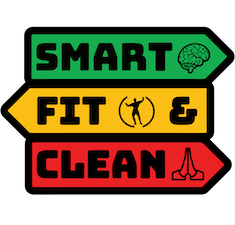The topic of this series is personalized nutrition. I began by talking about the person (the one whose nutrition is being -ized), and then about practicing some basic lifestyle guidelines as a starting point. Today’s topic is the first consideration that’s actually about food: protein.

Protein First
Why is protein first? Because of satiety and appetite control. Protein is the nutrient that is mostly highly-linked to a feeling of fullness (satiety), which means that eating an adequate quantity of protein will lead you to stop eating sooner. This prevents over-eating by reducing your appetite.
Why is protein first? Because of essential amino acids, which are used to rebuild, repair, or grow tissues in the body (including hair, skin, muscle, and bone). The protein you eat is broken down through digestion into its constituent amino acids. These amino acids are called “essential” because your body cannot produce them on its own, they have to be taken in from food. If you don’t get an adequate quantity of every amino acid, then your body cannot synthesize new proteins to grow or repair tissue.
Why is protein first? Because of the 4 calories per gram of energy it provides. This energy fuels your daily activity. 4 calories per gram is also the exact same amount of energy you get from eating carbohydrates, which means that every gram of protein in your diet potentially offsets a gram of carbohydrates from your diet. Not that carbs are necessarily bad, but let’s just say that there is no such thing as an “essential carbohydrate”.
Animal Protein vs. Plant Protein
The next question is whether you’re better off getting your protein from animal sources or plant sources. Animal protein is generally superior for digestion & absorption in the human body, but some people have ethical or health concerns around animal proteins. I may disagree, but I am not going to try to influence them strongly one way or the other.
Whether they are eating animal proteins or plant proteins, both individuals will have similar requirements. They are going to need a balance of all the essential amino acids (already balanced in meat). For vegetarians, this means getting their amino acids from a wide variety of plant sources, as well as supplementation with blended protein powders and amino acid supplements. They are also going to need adequate protein intake for their muscle mass and volume of strength training.
How Much Protein?
To determine how much protein you need to eat each day, one method is to start with an estimate of 1g protein per pound of lean body mass. Adjust that down as low as .8g for someone who is less active and doesn’t do as much strength training, or adjust up as high as 1.2g for a serious athlete.
Another way to determine daily protein requirements is to look at the size of your hand without the fingers or thumb (basically, the size of your palm + the thickness of your hand). Eat 1-2 pieces of protein of that size at every meal, for a total of 3-6 servings. For example, chicken breasts or thighs, hamburgers, steaks, salmon fillets, etc. The larger, highly-active, and stronger people would lean toward the high end of this (6 servings), while the smaller or more sedentary folks would lean towards the low end (3 servings).
When working with my clients on this, I start by determining their lean body mass using skinfold calipers and the “Yuhasz” method. Then, make recommendations based on those numbers and what I know about their training requirements. Folks can track their numbers using a food logging app like MyFitnessPal. On the other hand, some people are given the simpler method because it is easier for them to understand and execute.

5 thoughts on “Personalized Nutrition: Protein”